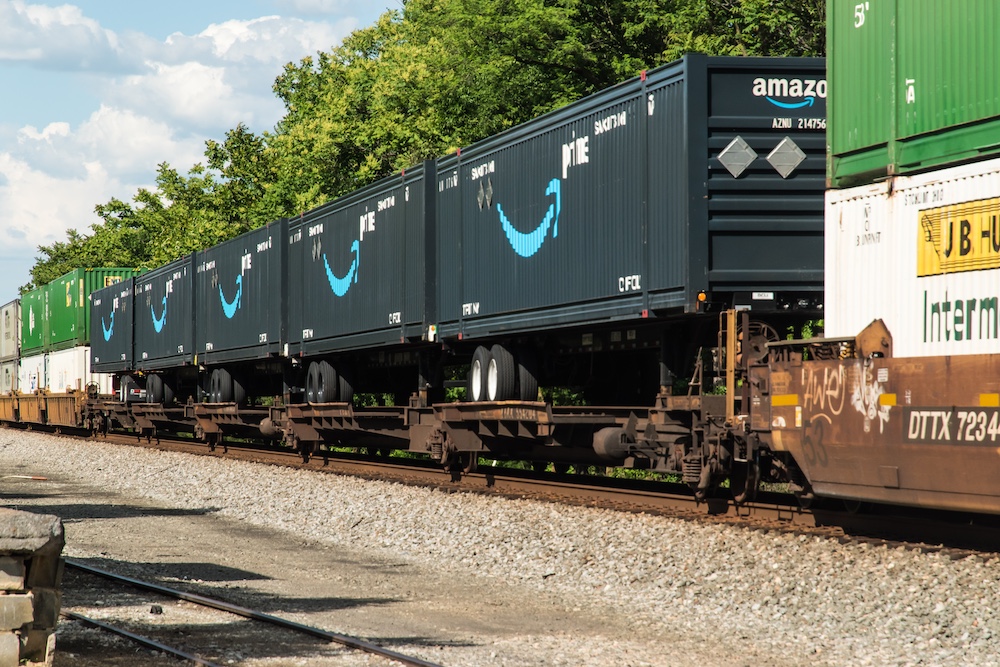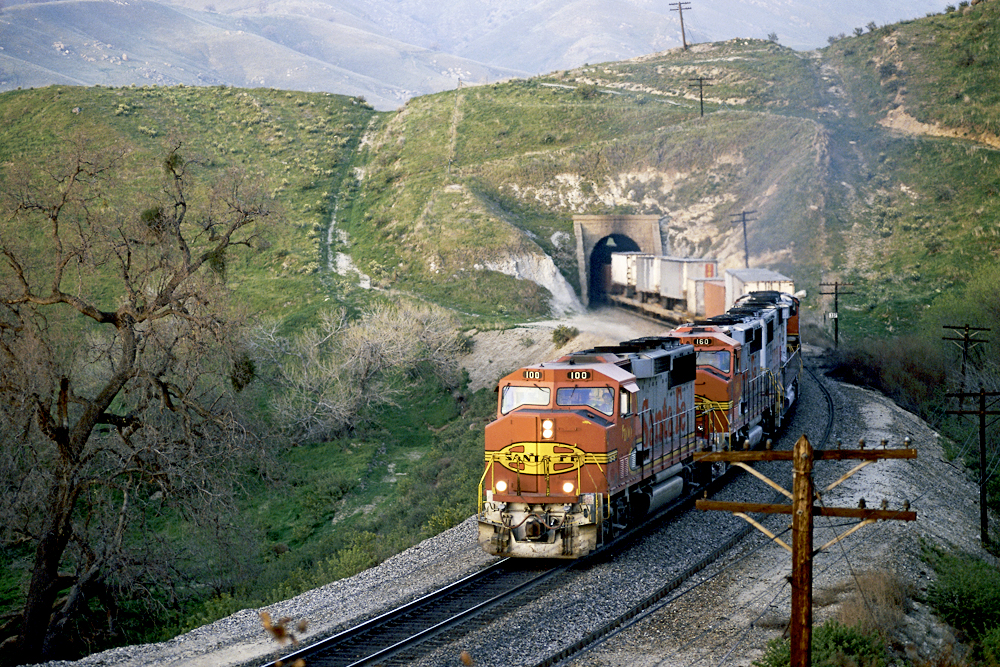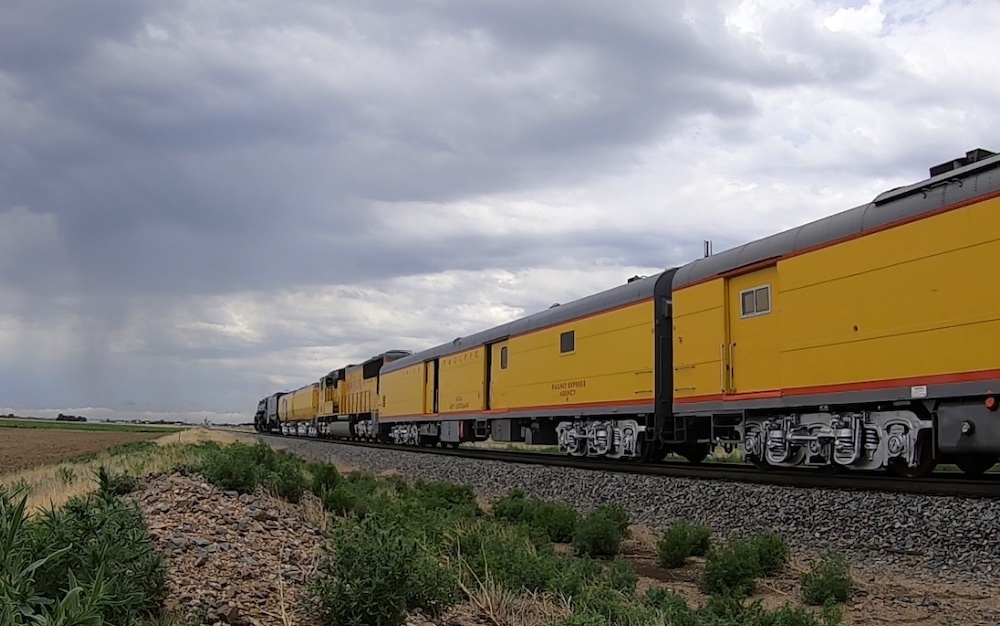Born of necessity
In the 1940’s and ’50’s, when nearly all road diesels were of the carbody (or “covered wagon”) type, chances are the above procedure would have been impossible. Out of more than 10,000 carbody diesels built from the mid-1930’s until the early 1960’s, roughly 3600 – more than a third – were booster units without operating cabs. These “B units” were intended to operate in consists led by cab-equipped A units. Each was a complete locomotive featuring the usual prime mover, generator, and traction motors.
During the “first generation” diesel era, a single unit did not have the power of a standard steam locomotive. To handle big trains, multiple diesel units were needed. Groups of units were built and thought of as single locomotives of A-B, A-B-A, or A-B-B-A configuration.
Early examples like EMD’s FT had A-B sets linked with a drawbar instead of couplers. Separate B units sported simple hostlers’ controls for yard movement. Partly to head off labor demands that a crew be assigned to each locomotive on a train, many roads devised numbering schemes to label an entire set as one locomotive yet uniquely identify each unit.
As dieselization matured, and the memory of one-unit steam trains faded, the missed opportunities of all those B units were recognized. When all units have cabs, flexibility is greatly enhanced. Nearly all hood-type diesels (or “road-switchers,” the covered wagon’s successor) have had cabs. But every so often has come the question: Why build and maintain expensive cabs on all units when they’re used only a small fraction of the time?
Some 447 road-switcher boosters have been built new, most by EMD. In 1953, Santa Fe got five GP7B’s, but the biggest customers for Geep B units were Pennsylvania Railroad and Union Pacific; together they got 165 GP9B’s. UP also took the only GP30B’s (40) and SD24B’s (45). UP and SP rostered the 8-axle DD35B; 30 were built 1963-64 (as was a big Alco C855B for UP).
The road booster concept then lay dormant for more than 15 years, except for eight MLW M420B’s for the British Columbia Railway in 1975. The early 1980’s saw Burlington Northern rebuild a few wrecked units without cabs (a practice found occasionally on other railroads), and BN took 120 new B30-7A(B) units from GE in 1982-83. The newest B’s are Santa Fe’s 25 GP60B’s of 1991.
Booster units in yard applications
Not all booster units were intended for road service. Eighty-eight switcher-type boosters were built in the 1940’s and early ’50’s, almost all by EMD. Each of these cabless units was paired with a standard switcher to form an A-B set, nicknamed “cow and calf.” Such pairings were more or less permanent – the units were joined by a drawbar – and were given separate model designations. An SW7 cow-calf set, for example, was a TR4 (for “transfer”).
Though Union Pacific used them for a time as helpers on Cajon Pass, most cow-and-calves were confined to yard or transfer duty. The last sets to run were on the Belt Railway of Chicago, which changed its units’ drawbars to couplers.
Several roads use slugs – weighted vehicles whose traction motors receive power from mother units. They may resemble boosters, but are not, because they lack prime movers.
As locomotives increased in size and fewer per train were needed, and as the resale market placed diesels in services far different from those they were built for, the flexibility of having a cab on each locomotive is no longer as critical. Except for use on a handful of mega-powered high-priority long-distance intermodal trains facing steep grades, the need for booster units has vanished.













The D&RGW (Rio Grande) converted a number of second generation four axle EMD locomotives to “cabless” units after 1972. Some of their GP30s, all of their GP35s and some are of their early GP40s had all cab accoutrements removed that were required to be lead (manned) units. However, these units retained their cabs. FRA (Federal Railway Administration) regulations for crew accommodations prompted this change — however, to my knowledge, they were used routinely this way for years and the change did not pose a problem in their use.